- Home
- Edward Lee
Succubi
Succubi Read online
Succubi
Edward Lee
ANGELS OF LOVE
Long, sleek legs, siren-like faces, flawless naked bodies glazed in moonlight and sweat...DEMONS OF DESIRENo prayer can save you, no force of will can resist their unholy caress. Through midnight's veil, they will lead you from your wildest dreams into a nightmare of passion, pain and death...
DAUGHTERS OF HELL
Their beauty beckons. Their flesh seduces. And they're coming now -- for you.
Welcome to Lockwood, a sedate, cozy kind of town...until night falls and the succubi come out to play. Hardcore sex, hardcore violence, and a harrowing ancient prophecy about to come true in spades-finally a supernatural horror novel that militant feminists will love! Sexy attorney Ann Slavik returns to her quiet hometown hoping to find her roots...but what does she find instead: murder.
Succubi
Edward Lee
Necro Publications
— 2010 —
First Digital Edition
—
Smashwords Edition
Also available in a signed trade paperback edition
ISBN: 978-1-889186-39-9
Succubi © 1992 by Edward Lee
This digital edition June 2010 © Necro Publications
—
Special thanks to Dave Barnett, Ginger Buchanan, for publishing the p/b, and Bob Strauss.
—
Prologue
“They cooked heads,” Ms. Eberle said.
Professor Fredrick quailed. His mind seemed adrift in the presiding pause. They cooked heads. He stared at the odd, gracile woman, then stared back down into the pit of skulls.
A cooking pit, he realized.
Despite the sun’s fierce blaze, he shivered in the clean, highland air. The site made him think of violations, of rape. A line of enthusiastic students tore at the face of the ridge with 20 pound pickaxes. Others turned shovels around amorphous shapes of things that the last six days of excavation had raised from the oblivion of ages. Dust rose in billows. The hectic sound of metal striking rock rang as a familiar song. Fredrick had spent his life doing this: disgorging smothered civilizations from the thick skin of the earth. Yet he’d never felt this way before. He felt like a trespasser.
Ms. Eberle stood beside him, gazing down into the dig like a god on a precipice. She was skinny and rather tall, pallid–a female version of Fredrick. Straight gray black hair had been cut around her gaunt face like a helmet. She had inordinately large breasts for her frame, which stretched the front of her khaki field blouse. Big pale blue eyes watched intently over the dig’s activity. When she smiled, the slit of her mouth showed a row of sharp, even white teeth.
She carried a bizarre expertise: an archaeological sociologist. Fredrick had read many of her papers in the journals; her work fascinated him—the application of societal mechanics to mythology. She was also perhaps the world’s only expert on the obscure pre Iberian race known as the Ur locs. Fredrick had contacted her in the states when the Oxford dig had begun to unearth things that weren’t supposed to be in the inclusion perimeter.
Cenotaphs. Dolmens. Huge mass graves in the middle of the plush English countryside.
A British air survey had notified Oxford University when some telltale traits had shown up on the topography plates. They’d thought it was an urn field. Oxford had then commissioned Fredrick and his team to start digging; they’d been looking for a misplaced Saxon settlement in the area since the discovery of several Brython tomes twenty years ago. Fredrick hadn’t been on the site a day when he realized they’d stumbled upon something else altogether.
They cooked heads, the woman’s soft throaty voice slipped back into his mind. Butchers. Cannibals.
A big diesel dredger pumped racket and fumes into the dappled sky. Young stratigraphy technicians finnicked with core cutters at the face of the deepest stope. Here time was a measurement, not in years, but in strati, in camelhair brushes, and in dust. Fluorine probes were thrust into orifices of wet clay and shale. No, this was no urn field—it was a corpse vault.
Tall trees shuddered around the dells, as if in pain. The site looked bombed, crater pocked. Dirt smudged students lifted buckets of trinkets off the winzeline, and carried them off on poles across their shoulders. The conveyor rolled up rock chunks and human bones out of the main trench.
“The Ur locs,” Fredrick said. “So you’re certain now?”
Ms. Eberle twisted a macro lens onto a modified Nikon F. “There’s no doubt,” she told him. “Everything your people have found corresponds directly to the archives of the Roman Occupation. This is the archaeological find of the decade.”
Her big eyes beamed back into the exhumation. Their glint made Fredrick think of lust.
«« — »»
The dig was nearly over. They were already past budget. Fredrick and Ms. Eberle walked past the last copse toward the tents. He looked down at his clay flecked leather boots, the same he’d worn on countless digs. From Galli to Nineveh, from Jericho to Troy to Knossos. He abstracted, wanting to smile. He thought of himself as a specter of the future. All these cities, once great, had been predestined to be trod upon by Fredrick’s old boots a millennium later. Time buried. Whole civilizations locked in layers of clay. He was walking on worlds, and some day, he realized, someone like him would walk on his.
“We’re going to be famous,” Ms. Eberle whispered.
“What?”
She didn’t answer, trudging on. Trucks rumbled out of the excavation, their springs straining against the proof of ages. Lots of bronze and primal iron. Brooches, jupon clips, stave caps and decorative armlets. Crates of potsherds exhaled rising ageless dust as the trucks rumbled on. They’d found a lot of cutlery, finely crafted and still sharp. Flat blades with long tangs, clearly not Saxon or Frisian. Cnifs, Eberle had called them. For human sacrifice. They’d found several cauldrons that were huge. Fek-chettles. But Ms. Eberle seemed most excited by the manuscripts. The well made earthenware and high nitrogen soil had preserved them; she photographed almost all of them before the truth of the open air had disintegrated the parchment to fine dust, infinity taking back what it was owed.
They stopped at the crossroads, to watch the last of the exodus. The trucks moved on, full of crates of the entrails of another time.
The last trucks carried significantly more:
Bones.
How many pits had they disinterred? How many graves? How many trenches ensiled with human heads?
“The graves will take months to exhume,” Ms. Eberle remarked.
“We don’t have months,” Fredrick replied. He stood upright against the mounting weight of his age. His tanned, lined face looked like a dried creek bed. “That’s what I need to talk to you about. We may not even have hours.”
“What do you mean?” she stiffened to object. “Don’t you realize what this is? This dig is the only physical evidence in the world of the Ur locs’ existence. They’re not an obscurity anymore, this excavation proves that they were real.”
“I’ll tell you something that’s more real. Recession. Tax rates. Inflation. We think we’ve got it bad in the states? This is England. Oxford will probably terminate the funds now. They paid us to find a Saxon urn field.”
The awkward woman’s face seemed to redden. “It’s history. How can they turn their backs on their own history?”
Easy, Fredrick thought. “You’ll get your chance to convince them. The appropriations liaison will be here in the morning. Just don’t get your hopes up.”
Their footsteps crunched up the weed tangled path. The sun seemed misshapen this close to dusk, an orb of molten orange light losing its contour to the slow and steady churn of the earth.
Fredrick held open the canvas flap. As she entered the tent, he stared after her, and
the lithe shadow. He paused in time, then entered the tent himself, wondering how many thousands of people had been butchered here.
«« — »»
It was the ease with which Ms. Eberle spoke that made Fredrick queasy. She assessed several field photos of the huge cauldrons. “The Ur locs did things that would make Vlad the Impaler look like Captain Kangaroo. Skinning, castrating, dismembering—it was all part of their art. They plundered whole settlements, not for spoils or territorial expansion, but for infydels to serve either as sacrificial victims, slaves, or food. They were big on sacrificing children from conquered settlements. Babies provided the ultimate sacrifice to the object of the Ur locs’ belief. Men were taken as slaves. Women were butchered for food. The Ur locs considered any women out of their bloodline to be spiritual enemies. So they ate them.”
Fredrick’s old hand shook slightly as he poured tea from a thermos. The tea steamed before their faces.
“And these cauldrons, the chettles?” She pointed to one of the photos. “They’ve got a volumetric capacity of about 100 gallons. They filled them with blood and cooked their festival meats in them. I figured it out. Do you know how many human beings would be needed to provide 100 gallons of blood?”
Fredrick winced in the wake of the revolting question. “How many?” he dared himself to ask.
“About seventy five.”
Jesus, Fredrick thought.
“They roasted babies by the dozens on dolmens,” she went on, brushing clay dust out of her hair. “They were very concerned with youth, or should I say with the spiritual cyclic inversion of human worldliness to infinity. Hence, the ritual obsession with the sacrifice of youth. It was all a transaction, a gesture of tribute by way of a spiritual emulation.”
“That’s preposterous,” Fredrick said.
“Is it? Is it really? The Ur locs were a very secretive occult society. They lived for over a thousand years amongst the Celts, Goidels, and Brythons with little or no knowledge of their existence. Ur, by the way, is a pre Old English derivative for weik or wicc.”
“Witches,” Fredrick offered.
“Yes. We’re talking about a subcultural belief system that predates European record. Witches, before the existence of witchcraft. It was all transitive. By sacrificing youth, they reasoned that they could metamorphose that youth into the object of their beliefs. Faith and sacrifice. It’s the foundry of all religious systems, Christianity included.”
“Christians didn’t roast babies on dolmens,” Fredrick said.
“No, but read about what the Christians were before Christ, before the laws of the Old Testament were eradicated by the New Covenant. They believed in the same God, yet they were notoriously sacrificial. Read Leviticus, if you have the stomach. It’s universal, Professor. It’s proof of sanctity.”
“Sanctity? What does cooking human flesh in 100 gallon cauldrons of blood have to do with sanctity?”
“Blood,” she replied. “The essence of life. It was a symbol, and it can be said that any religion functions through a mechanical utility of sociological symbols. It can also be said that religion demonstrates a society’s sense of hope through faith.” Did she pause to smile? “Blood, the essence of life. Is not the consumption of blood a universal gesture of perpetuity? Of sanctity? The Druids were doing it six hundred years before Christ was born. Ever heard of Holy Communion?”
“Fine,” Fredrick said. He felt disgusted, tired. What would the funds liaison think when he was told what the Ur locs really were? He wished they’d found their dull, easy urn field instead.
Ms. Eberle splayed out more photos. One showed a deep cooking pit. “The Ur locs had a particular taste for human brains, slow cooked in the skull. The heads would steam in their own juices for several hours, whereupon they were removed and cracked open with stone mallets. They had slaves who were trained exclusively for this task, called cok-braegans, which means, literally, brain cookers. The brains were served piping hot over chunks of baked oatmash.”
Now Fredrick’s stomach seemed to be intent on turning itself inside out. His bile roiled.
“And you’ve heard of Rocky Mountain Oysters? Well, the Ur locs had their own variation. Human testicles were corn-floured and deep fried in pots of sesame oil. They also had a bone marrow potpourri that proved a favorite appetizer. The marrow was blended with peppers and wild onions, pan simmered to coagulation, and served on wheat cakes. Kind of like pate on toast points. A most notorious ceremonial dish—reserved for high ranking Ur loc priestesses—was called ‘womb bread.’ Human uteri were stuffed with stone ground wheat and leaven and then baked in stone ovens. Quite often, semen was used as a baste.”
Womb bread, Fredrick thought in bald revulsion.
“Ovaries were marinated and skewered over an open wood fire. Lungs were pureed, carefully blended with wild raspberries, and cooked like pudding. Tongues, lips, and facial muscles were minced, spiced, wrapped in human skin, then fried in oil until crisp. The most famous Ur loc festival meal was known as entrillus-brok—which means ‘gut roll’: chopped bowel wrapped in lotus leaves and steamed in blood.”
Fredrick paled, looking back at her in utter silence. His mouth felt dry as sand as Ms. Eberle continued her all too detailed description of Ur loc cuisine.
“As for the cauldrons, they were brought to a high, roaring boil. Choice organs such as the liver, the spleen, the kidneys, were immersed into the boiling blood and stirred regularly. All of the larger muscle groups were expertly filleted and tossed into the pot, too. Herbs and spices were added gradually, and toward the end of the boil, veggies were tossed in.”
Veggies. Fredrick’s mind swam in a momentary fog of terrible imagery. He could picture the Ur loc abattoirs, where human beings were filleted like trout, where abdominal cavities were systematically cleaned of their choicest parts, and where throats were slit and pitilessly emptied into hot cauldrons. Womb bread, he thought. Gut roll. Could such a society have really existed? Could spiritual beliefs actually have compelled people to roast babies? “Ms. Eberle,” he said, shaking off the fog. “When the liaison arrives, I think you might spare him these culinary details. He’ll want to know why the Ur locs are important from an archaeological standpoint. What are you going to tell him?”
“The truth,” Ms. Eberle returned. “The Ur locs were a female dominant society. They regarded the whole of the male race as a necessary evil. Whenever an Ur loc gave birth to a male child, that child was summarily sacrificed to the object of their beliefs. Ur loc commanders attacked outside settlements with a militia composed entirely of male slaves from previous conquests.”
“That’s a bit hard to believe.”
“Perhaps you just don’t want to believe it. You just don’t want to believe that women have existed as a sociological superior over men, when in fact there are many such examples throughout history.”
Was that it? Fredrick didn’t think so. “How did they do it, then? How were a bunch of renegade amazons able to enslave whole communities of men?”
“That’s a legitimate query, Professor,” she admitted. “But unfortunately there’s no clear-cut answer. As I’ve stated, the Ur locs were witches. The Roman registry abounds with occult reference to them, and though the Celts left very little written record of themselves, the little they did leave documents it all.”
“Witches, you mean? You’re telling me that the Ur locs reigned over a territory for a thousand years because they put spells on men?”
“I’m not saying that myself. Just read the registries. According to record, the Ur locs ritualistically called upon the object of their beliefs to empower them against their enemies. But it scarcely matters. I don’t believe in the occult, Professor Fredrick. However, I do believe in the importance of studying the function of the Ur loc race as a sociological unit. You must admit, though, how quickly we tend to laugh at that which we cannot objectively or scientifically explain…”
As she spoke, he tuned out her words. Very slowly an image began to suppl
ant itself into Fredrick’s head. He saw peasants fleeing in horror at the thunder of hoofs, shadows descending, swords and battleaxes held high. He saw the innocent butchered in place, torsos shorn and limbs severed in the wake of horses and dust. Great blades glimmered, sinking into random flesh as simple dwellings were set ablaze. He saw women cutting heads off people. He saw babies plucked out of the arms of shrieking mothers. Beautiful strong women dismounted amid the terror, long dark hair flowing like manes, their bodies limber in battledress. Dismembered corpses twitched in the dirt as heads were dropped into the smoking pits. Blood gushed. Screams wheeled into the air. The glorious Ur locs directed blank faced slaves to eviscerate the dying and the dead. And through the atrocious clarity of the image, Professor Fredrick was able to glimpse the face of one of these destitute servitors.
It was his own.
“…and quite regrettable, though, the tendency of our intellectualism to discount the esoteric and the obscure.”
Fredrick’s consciousness resurfaced. His old heart slowed down like an afterfright when the image lapsed and was replaced by Ms. Eberle’s glinting eyes and grin.
“What happened to them?” Fredrick asked. He sipped his tea, to distract himself. The tea was cold.
“No one knows for sure. Like the Mayans and the Tai’tks, the Ur locs seemed to have disappeared within a very specified chronology. There’s no evidence to support the likelihood of a military annexation or genocide. Famine or plague are equally unlikely. My guess, based on the nomenclature of their religion, is that they probably disappeared via a premeditated population dispersal.”
“What makes you say that?”
“A simple connotative survey of their practice of worship. Every aspect of Ur loc culture is well recorded in the Roman archival records. The Ur locs, like the Druids and the Hindus, practiced a religion that was ascensional. They viewed physical life as a process of spiritual purification. More than likely the Ur locs deemed that they had risen to a sufficient spiritual stratification of purity, whereupon they dispersed themselves into outside populations, as per the mandates of the object of their belief.”

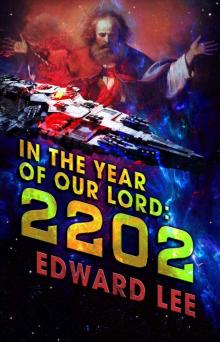 In the Year of Our Lord 2202
In the Year of Our Lord 2202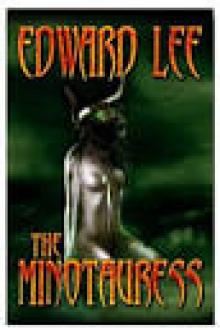 The Minotauress
The Minotauress Terra Insanus
Terra Insanus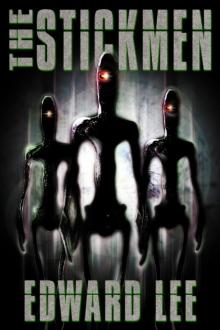 The Stickmen
The Stickmen Flesh Gothic by Edward Lee
Flesh Gothic by Edward Lee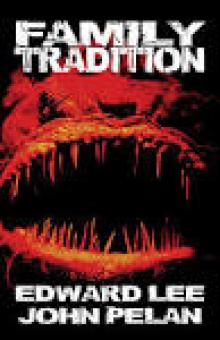 Family Tradition
Family Tradition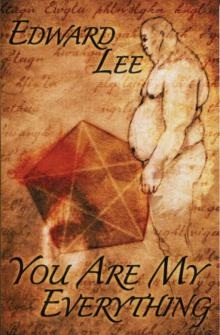 You Are My Everything
You Are My Everything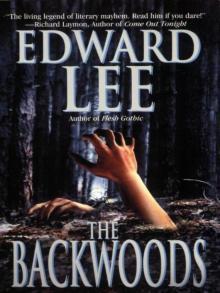 The Backwoods
The Backwoods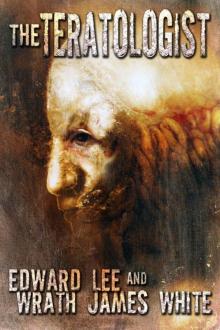 The Teratologist
The Teratologist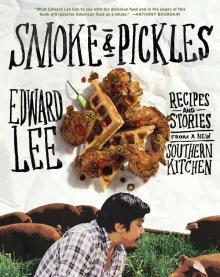 Smoke and Pickles
Smoke and Pickles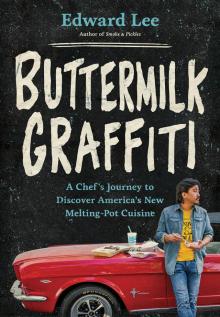 Buttermilk Graffiti
Buttermilk Graffiti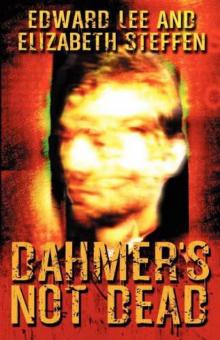 Dahmer's Not Dead
Dahmer's Not Dead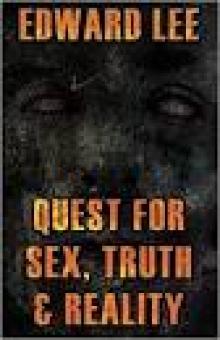 Quest for Sex, Truth & Reality
Quest for Sex, Truth & Reality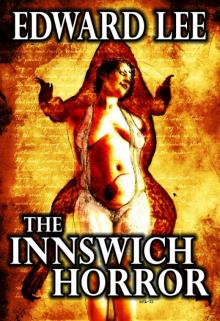 The Innswich Horror
The Innswich Horror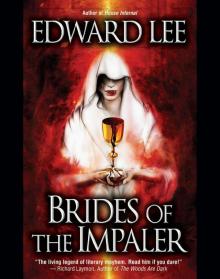 Brides Of The Impaler
Brides Of The Impaler Goon
Goon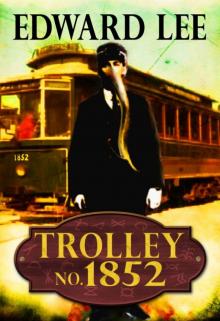 Trolley No. 1852
Trolley No. 1852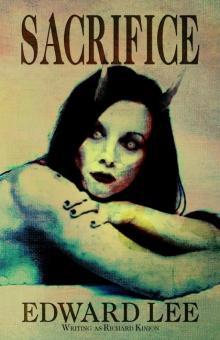 Sacrifice
Sacrifice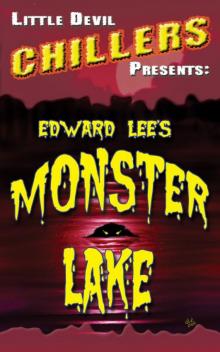 Monster Lake
Monster Lake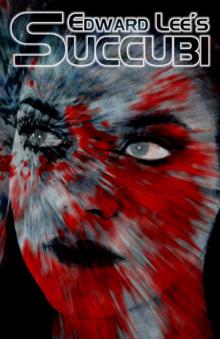 Succubi
Succubi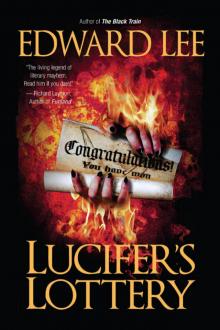 Lucifer's Lottery
Lucifer's Lottery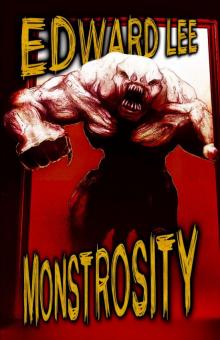 Monstrosity
Monstrosity The House
The House The Dunwich Romance
The Dunwich Romance Operator B
Operator B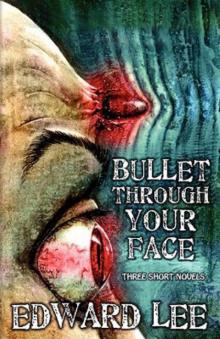 Bullet Through Your Face (improved format)
Bullet Through Your Face (improved format)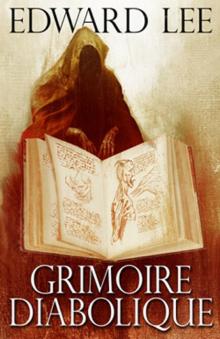 Grimoire Diabolique
Grimoire Diabolique Room 415
Room 415 The Messenger (2011 reformat)
The Messenger (2011 reformat)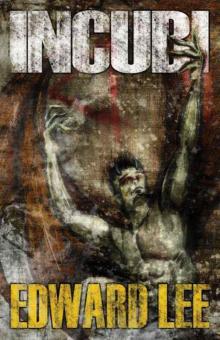 Incubi
Incubi The Black Train
The Black Train House Infernal by Edward Lee
House Infernal by Edward Lee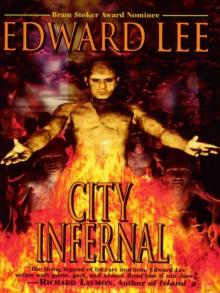 City Infernal
City Infernal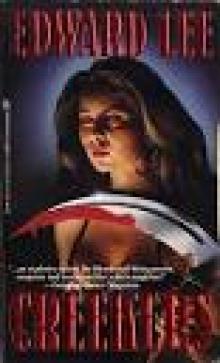 Creekers
Creekers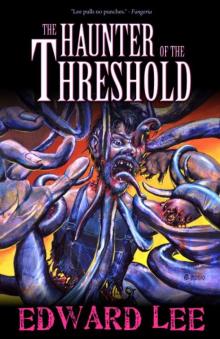 The Haunter Of The Threshold
The Haunter Of The Threshold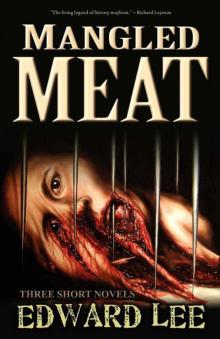 Mangled Meat
Mangled Meat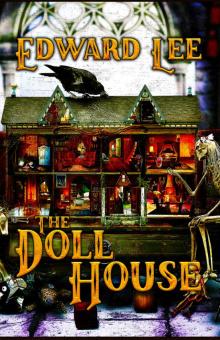 The Doll House
The Doll House Header 2
Header 2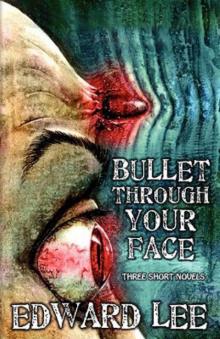 Bullet Through Your Face (reformatted)
Bullet Through Your Face (reformatted)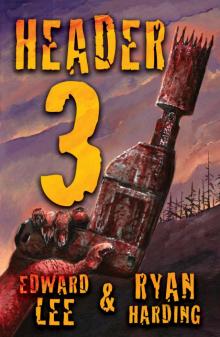 Header 3
Header 3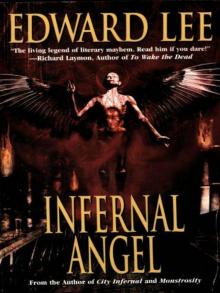 Infernal Angel
Infernal Angel Pages Torn From a Travel Journal
Pages Torn From a Travel Journal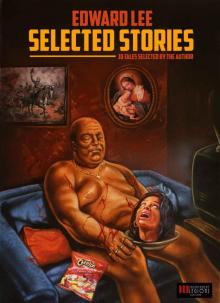 Edward Lee: Selected Stories
Edward Lee: Selected Stories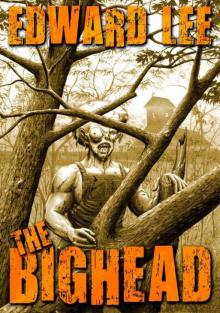 The Bighead
The Bighead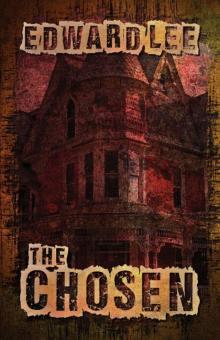 The Chosen
The Chosen